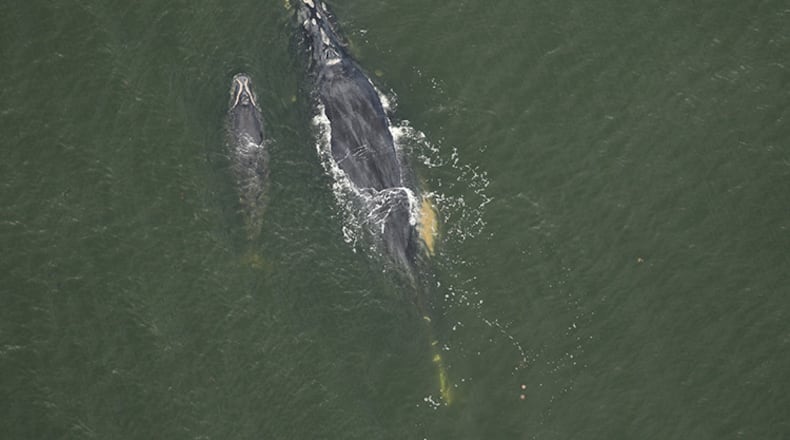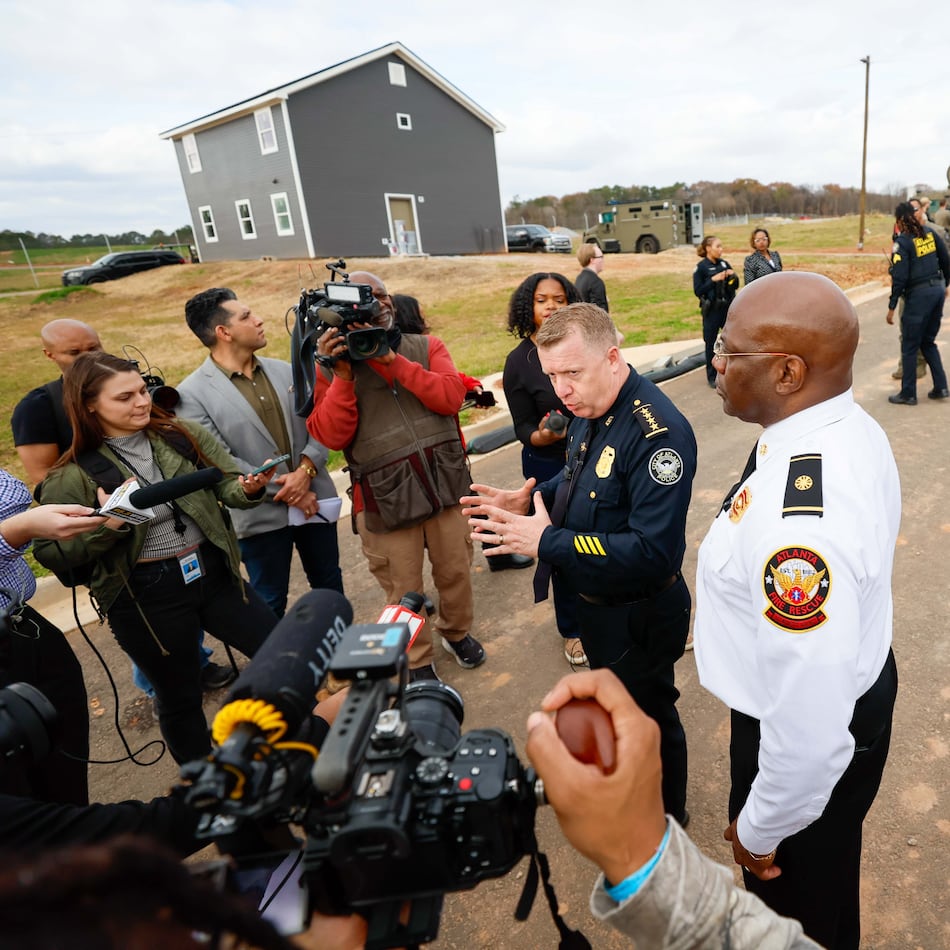SAVANNAH — Some of nature’s largest wintering tourists, North Atlantic right whales, recently departed the Georgia coast to return to their primary feeding grounds in New England and Nova Scotia.
They annually migrate to Georgia and Florida from mid-November to mid-April, seeking warm waters with few predators, to give birth and raise their calves.
It wasn’t the best of winters for the endangered species, which needs at least 20 to 30 offspring each year to maintain their population while avoiding fatal boat strikes.
The whales returned north with only 11 confirmed new calves, down from 20 last year, and the lowest estimated total since 2020, according to the National Oceanic and Atmospheric Administration, or NOAA.
“Definitely the consensus is 11 is a disappointing season,” said Chantal Audran, the executive director of the Tybee Island Marine Science Center.
In a positive turn, though, no one reported any deaths of calves after several died during the 2024 calving period, including one off the coast of Savannah and another that washed ashore on Cumberland Island National Seashore.
North Atlantic right whales can tip the scales up to 140,000 pounds and grow to 52 feet. Despite their size, their lack of a dorsal fin and tendency to float just below the surface make them hard to spot on the water.
Over the past decade, the species has experienced more deaths than births, primarily from collisions with vessels and entanglement in fishing gear. In 2017, a record 41 right whales died. Since 2017, 139 have been injured or killed.
There are fewer than 370 in existence, including roughly 70 reproductively active females, according to NOAA.
Credit: NYT
Credit: NYT
A big factor in their low numbers is that the whales aren’t getting enough to eat. They use their baleen plates as sieves to strain huge amounts of copepods, also known as zooplankton. Researchers say climate change has reduced zooplankton levels in the whales’ traditional North Atlantic feeding areas. The result: Smaller whales that live shorter lives, while females take longer to become reproductively active.
Underweight whales also have a harder time recovering from boat strikes and entanglements.
Two technological developments may help: the rise of rope-less fishing tackle and the growth of the StationKeeper program that uses the Automatic Identification System, or AIS, to identify boats in areas where whales are active, then automatically reminds those boats to slow to the NOAA-required 10 knots (11.5 mph) or below in such areas.
The StationKeeper system is a partnership between several conservation organizations and is managed by MotionInfo, a Massachusetts company that provides real-time tracking and monitoring.
All commercial vessels 65 feet and longer are required to carry the AIS collision avoidance system. NOAA recently withdrew a proposed rule that would have expanded speed limits to include smaller boats.
Oceana, an ocean conservation organization, did a study showing that from November 2020 through July 2022, 84% of ships sped through NOAA mandatory slow zones for the whales and 82% of boats sped through voluntary slow zones. The hope is the StationKeeper will ensure better compliance from vessels.
“We want to get to the point that any time there’s a pod of whales, we can warn boats within a five-mile radius,” said MotionInfo CEO Moses Calouro. “We hope to have 80 up by the end of this summer.”
Tybee’s Marine Science Center became the first StationKeeper location in March, but others have since been installed along the Georgia coast at Brunswick, Little St. Simons Island, Little Cumberland Island, and Sapelo Island. They are part of a network stretching to Maine, with 130 StationKeeper systems planned.
“We couldn’t be more proud to be a part of this,” Audran said. “It has caught on like ripples on water within a year. This is an important area to protect these whales because Savannah is a very busy port. I would love to see a similar boom of the calving numbers, like we did in the early 2000s.
“There’s hope within the grim moment that we’re having right now.”
About the Author
Keep Reading
The Latest
Featured




